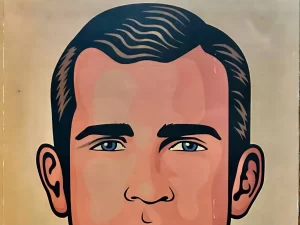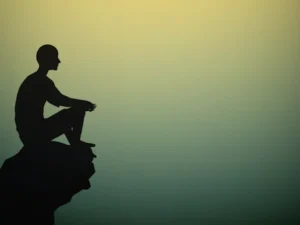The iconic Interview magazine, founded in 1969 in New York, was the brainchild of artist Andy Warhol and British journalist John Wilcock. Originally launched as a pretext for Andy and his friends to gain access to the parties at the prestigious New York Film Festival, hence the magazine’s early subtitle, A MONTHLY FILM MAGAZINE, the publication would unintentionally define an era. With its peculiar combination of “downtown” and “residential” coverage, replete with features on Hollywood celebrities, politicians, intellectual writers, artists and like-minded bon vivants, if you were mentioned in its hallowed pages, you were considered IN, part of the Beautiful People. In fact, Interview magazine was a de facto extension of The Factory, the world according to Andy Warhol.


To gain traction in its early days, free copies of “inter / VIEW”, as the publication was initially titled before becoming the recognisable brand, Interview, were handed out free to connoisseurs. Once the magazine became a success, Warhol stepped back from daily supervision to allow industry professionals to hone his editorial style to reach a wider audience under editor Bob Colacello. Nonetheless, he would enthusiastically embrace the role of ambassador for the magazine, often distributing issues directly on the street to passersby and creating ad hoc signature events throughout New York City. The edgy Interview covers, which gave the magazine its signature style, were created by artist Richard Bernstein from 1972 to 1989. After Warhol’s untimely death in 1987, due to a medical error during a routine hospital visit in New York, billionaire industrialist and art collector Peter Brant steered the magazine to even greater corporate success under the wing of Brant Publications, Inc. However, with the dawn of the Internet age and the proliferation of the citizen journalist, the magazine would eventually file for bankruptcy in 2018. It still operates under the wings of Peter Brandt.


Bernstein, an American pop artist in his own right, turned each issue into a true collector’s item. He lived at the Chelsea Hotel, a haven for avant-garde artists, until his death in 2002. Art dealer and gallerist Jeffrey Deitch exhibited the artist’s Interview magazine covers in a show called Fame: Richard Bernstein in 2018 in New York. Bernstein created a total of 189 covers from 1972 to 1988. He was also responsible for the magazine’s distinctive logo, using shallow lettering to scrawl “Andy Warhol Interview” on the cover in a bold style that resonated with street graffiti art. The magazine’s content was more nuanced, full of interesting and insightful articles about the personalities that graced the cover of each eagerly awaited issue.


One of those responsible for much of that content was Liz Derringer, once married to legendary rock guitarist Rick Derringer, who interviewed celebrities, mainly from the Rock & Roll scene, from 1969 to 1986. In her own words, this is how Liz remembers those wild times, a very different and untamed New York City:


“I met Andy Warhol when I was 15. My best friend, Andrea Whips Warhol [real name Feldman] starred in some of Andy’s infamous films. One night, Andy asked if we wanted to go to the opening of a new club in Sheridan Square called Salvation. I borrowed a dress my sister made, and it consisted of a triangle top and a mini-skirt that went up to my privates. After all, it was the 1960s. When we got to the club, the press went crazy taking pictures of us. The girls at the front gave me a temporary tattoo between my breasts. Then they took us to a private room. We heard there was a new band playing from England with a sensational black guitarist. It turned out to be Jimi Hendrix. What a night. A year later, I was walking past a newsstand and I saw a headline that said, “Actress shoots Andy Warhol” and on the front page was a file photo of Andy and I from that event. Everyone thought I shot him! Andy used to call me Mrs. Rockstar because I was married to the great guitarist Rick Derringer. He asked me to go out and interview some of the rock stars he knew for his new magazine, INTERVIEW. I told him I had no idea how to do it and he told me to go to the Factory and the editor, Peter Lester would advise me. My first task was to talk to Bernie Taupin [Elton John’s songwriter friend]. I was nervous, but I did well for my first interview. Then he asked me to talk to Johnny and Edgar Winter, two Albino brothers from Texas. My husband was performing with them at the time. Johnny was an incredible blues guitarist and Edgar was an incredible pianist and saxophonist. They took us into a room they had painted white. White walls, floors, curtains and furniture, everything was white, including the two brothers. How clever I thought, the pictures were really fantastic!


I then interviewed Linda Blair, the star of The Exorcist. We accompanied her out west when Rick was on tour and Linda was filming a movie. Back east we became fast friends. At the photo shoot, I remember we taped her big breasts together with masking tape, so that they would stand out in the elegant dress we provided. I loved interviewing her because we laughed the whole time.


“Then Andy wanted Cyrinda Foxe, who was a fabulous Warhol superstar and eventually married Steven Tyler of Aerosmith, to interview Rick and me. I remember putting on a lot of black eye make-up and piling my hair on top of my head at the Factory. Christopher Makos, one of Andy’s wonderful photographers, took our pictures. First, he put us in two separate wooden display cases. We crouched inside while Chris’s camera was turned off. Then he put us close together with a single flower between us. These photos were really beautiful. Every time I saw Richard Bernstein after that, he always commented on my high braids.
My years in the interview were fascinating. I loved being in the factory and talking to all those sensational people. I think of Andy often and miss all the fun we had over the years. There will never be another Andy. No matter what party he attended, if no one else showed up, Andy was always there.
While the era of the original Interview magazine under Andy Warhol’s tutelage recedes in the rear-view mirror, his influence continues to produce new ideas, to spark the imagination. Case in point: the Brooklyn Museum’s Studio 54: Night Magic, an ambitious exhibition devised by Matthew Yokobosky, senior curator of fashion and material culture. The exhibition opened the day before all of New York essentially shut down due to the Covid-19 virus that has turned metropolises around the world into modern ghost towns. The show’s press release says: “After the Vietnam War, and in the midst of the nationwide Civil Rights Movement and struggles for LGBTQ+ and women’s rights, a nearly bankrupt New York City [in the 1970s] craved a social and creative transformation, as well as a sense of joyous celebration after years of protest and upheaval”. In a sense, the city has come to a standstill once again, even more. Which begs the question: what explosion of creativity, what hunger for fun will be born out of these strange times? After every major war, there are the post-war years that seem inevitably to produce the new Ernest Hemingway, the new F. Scott Fitzgerald, the new Martha Graham and the new Andy Warhol. Politicians are already wondering aloud whether things will ever be the same again. Implicit is the promise to bring back yesterday. But New York is about tomorrow. It will always be.

Editor’s note:
The exhibition Studio 54: Night Magic is scheduled to remain at the Brooklyn Museum from March 13 to July 5. The museum, located at 200 Eastern Parkway, Brooklyn, NY 11238, is currently closed. Call 718 638 5000 for more information.
This article is republished courtesy of M magazine / intheArtworld.com / New York / editor@intheArtworld.com / +1212956 0614











